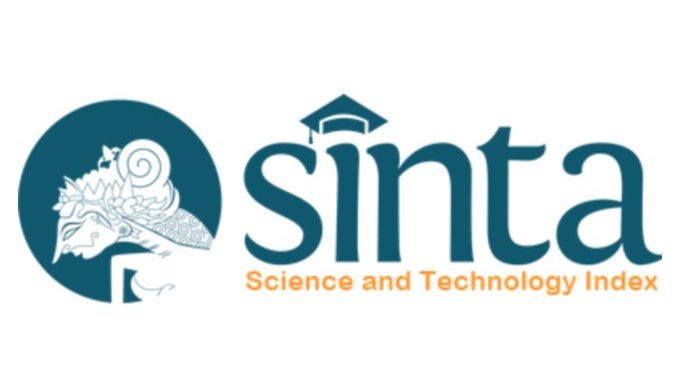Kejadian Karsinoma Sel Basal di RSUD Dr. Moewardi Surakarta Berdasarkan Subtipe Histopatologi menurut Jenis Kelamin, Usia, Lokasi Anatomi, dan Diameter Tumor
DOI:
https://doi.org/10.55175/cdk.v46i4.478Keywords:
Karsinoma sel basal, subtipeAbstract
Latar Belakang: Karsinoma sel basal (KSB) merupakan kanker kulit non-melanoma berasal dari lapisan basal epidermis sel yang tidak mengalami keratinisasi. Penyakit ini dapat bersifat agresif (A) dan non-agresif (NA) berdasarkan histopatologi. Tujuan: Analisis jenis KSB berdasarkan jenis kelamin, usia, lokasi anatomi, dan diameter tumor. Metode: Penelitian observasional analitik dengan pendekatan cross-sectional, pada bulan April 2018 – Agustus 2018. Sampel berjumlah 19 preparat pasien karsinoma sel basal di Poli Kulit dan Kelamin RSUD dr. Moewardi yang memenuhi kriteria inklusi dan eksklusi. Sampel dibagi dalam kelompok KSB A dan KSB NA berdasarkan histopatologi. Hasil: Sebagian besar kasus wanita (68,4%) dengan KSB A; rata-rata usia 57,5 ± 17,5 tahun dan sebagian besar petani 25,2%. Lokasi terbanyak di mid face pada KSB A (57,9%) dan KSB NA (10,5%); diameter >2 cm pada KSB A (52,6%) dan KSB NA (47,4%). KSB A 5,3 kali lebih banyak daripada KSB NA. Simpulan: Kasus KSB terutama dijumpai pada wanita, usia >50 tahun, petani, lokasi di mid face, dan diameter >2 cm.
Background: Basal cell carcinoma (BCC) is a non-melanoma skin cancer originating from the basic epidermal layer of non-keratinized cells. Histopathologically, it can be aggressive (A) or not (NA). Objective: To analyze histopathological BCC subtype based on gender, age, anatomic location, tumor diameter. Methods: An analytical cross sectional observational study. The study was conducted on 19 basal cell carcinoma patients in Dermatovenereology Clinic dr. Moewardi General Hospital in April 2018 - August 2018 who fulfilled the inclusion and exclusion criteria. The samples were divided histopathologically into A BCC and NA BCC groups. Results: Most patients were women (68.4%) with A BCC; the average age was 57.5 ± 17.5 years old and the occupation of the patients was mostly farmers (25.2%). The location was mostly in midface in A BCC (57.9%) and NA BCC (10.5%); diameter > 2 cm in A BCC (52.6%) and NA BCC (47.4%). A BCC was 5.3 times more prevalent than NA BCC. Conclusion: BCC cases were mostly women, at the age of >50 years, farmer, located in mid face, and diameter >2 cm.
Downloads
References
Tilli C, Van Steensel M, Krekels G, Neumann H, Ramaekers F. Molecular aetiology and pathogenesis of basal cell carcinoma. Br J Dermatol. 2005;152(6):1108-24.
Carucci JA, Leffell DJ, Pettersen JS. Basal cell carcinoma. In: Goldsmith LA, Katz SI, Gilchrest BA, Paller AS, Leffell DJ, Wolff K, eds. Fitzpatrick’s dermatology in general medicine. 1. New York: McGraw-Hill Co; 2012. p. 1294-303.
Dębski T, Lembas L, Jethon J. Basal cell carcinoma. Current concepts in plastic surgery: InTech; 2012. p. 1-38.
Aoki M, Pawankar R, Niimi Y, Kawana S. Mast cells in basal cell carcinoma express VEGF, IL-8 and RANTES. Int Arch Allergy Immunol. 2003;130(3):216-23
Bataille V, Lens M, Rajpar S. The epidemiology, aetiology and prevention of non-melanoma skin cancer. In: Rajpar S, Marsden J, eds. ABC of skin cancer. 94. Oxford: Blackwell Publ Ltd; 2009. p. 5-7.
Rubin AI, Chen EH, Ratner D. Basal-cell carcinoma. N Engl J Med. 2005;353(21):2262-9
Raasch B, Buettner P, Garbe C. Basal cell carcinoma: Histological classification and body-site distribution. Br J Dermatol. 2006;155(2):401-7
De Vries E, Louwman M, Bastiaens M, de Gruijl F, Coebergh JW. Rapid and continuous increases in incidence rates of basal cell carcinoma in the southeast Netherlands since 1973. J Invest Dermatol. 2004;123(4):634-8
Marcelina P, Mappiasse A, Anwar AI, Ganda IJ, Hatta M, Masadah R. Expression of patched-1 protein in aggressive and nonaggressive basal cell carcinoma. Am J Clin Exp Med. 2016;4(5):122-8
Yahya YF, Krishnaputri S, Harianti T, Toruan TL, Fantoni Y, Kasim BI. Profil karsinoma sel basal primer di RSUP M. Hoesin Palembang. MDVI. 2011;38(2):78-83
Marcelina P, et al. Profil karsinoma sel basal di Unit Rawat Jalan ilmu kesehatan kulit dan kelamin RSUP Dr. Wahidin Sudirohusodo Makassar 2010-2014. Departemen Ilmu Kesehatan Kulit dan Kelamin Fakultas Kedokteran Universitas Hasanudin Makassar; 2014 .p. 1-20.
Diana R, Dharmawan N. Profil penderita karsinoma sel basal di poliklinik kulit dan kelamin RSUD Dr. Moewardi Surakarta periode Januari 2011 - Desember 2015-2017.
Nakayama M, Tabuchi K, Nakamura Y, Hara A. Basal cell carcinoma of the head and neck. J Skin Cancer. 2011;11:1-9
Mackiewicz-Wysocka M, Bowszyc-Dmochowska M, Strzelecka-Węklar D, Dańczak-Pazdrowska A, Adamski Z. Basal cell carcinoma–diagnosis. Contemp Oncol. 2013;17(4):337-42
Vantuchova Y, Curik R. Histological types of basal cell carcinoma. Scripta Medica (Brno). 2006;79(5-6):261-70.
De Rosa G, Barra E, Guarino M, Staibano S, Donofrio V, Boscaino A. Fibronectin, laminin, type IV collagen distribution, and myofibroblastic stromal reaction in aggressive and nonaggressive basal cell carcinoma. Am J Dermatopathol. 1994;16(3):258-67
Dourmishev A, Popova L, Dourmishev L. Basal-cell and squamous-cell carcinomas: epidemiology, location and radiotherapy. Skin Cancer. 1996;11:195-200
Dourmishev LA, Rusinova D, Botev I. Clinical variants, stages, and management of basal cell carcinoma. Indian Dermatol Online J. 2013;4(1):12-7
Tran H, Chen K, Shumack S. Epidemiology and aetiology of basal cell carcinoma. Br J Dermatol. 2003;149:50-2
Baxter JM, Patel AN, Varma S. Facial basal cell carcinoma. BMJ. 2012;345(7):871
Szewczyk M, Pazdrowski J, Golusinski P, Danczak-Pazdrowska A, Łuczewski Ł, Marszałek S, et al. Basal cell carcinoma in farmers: an occupation group at high risk. Int Arch Occup Environ Health. 2016;89:497-501
Wang H, Diepgen TL. The epidemiology of basal cell and squamous cell carcinoma. Molecular mechanisms of basal cell and squamous cell carcinomas. Springer; 2006. p. 1-9.
Syrigos KN, Tzannou I, Katirtzoglou N, Georgiou E. Skin cancer in the elderly. in vivo. 2005;19(3):643-52
Birch-Johansen F, Jensen A, Mortensen L, Olesen AB, Kjær SK. Trends in the incidence of nonmelanoma skin cancer in Denmark 1978–2007: Rapid incidence increase among young Danish women. Int J Cancer. 2010;127(9):2190-8
Callens J, Van Eycken L, Henau K, Garmyn M. Epidemiology of basal and squamous cell carcinoma in Belgium: The need for a uniform and compulsory registration. J Eur Acad Dermatol Venereol. 2016;30(11):1912-8
Apalla Z, Lallas A, Sotiriou E, Lazaridou E, Ioannides D. Epidemiological trends in skin cancer. Dermatol Pract Concept. 2017;7(2):1-6
Dogan G. Basal cell carcinoma in outdoor versus indoor workers in Turkey. Int J Dermatol. 2007;46(1):43-6
Scrivener Y, Grosshans E, Cribier B. Variations of basal cell carcinomas according to gender, age, location and histopathological subtype. Br J Dermatol. 2002;147(1):41-7
Walling HW, Fosko SW, Geraminejad PA, Whitaker DC, Arpey CJ. Aggressive basal cell carcinoma: Presentation, pathogenesis, and management. Cancer Metastasis Rev. 2004;23(3-4):389-402.
Baker S. Reconstruction of the nose. Baker locals flap in facial reconstruction. 2nd ed. British: Mosby Elsevier, Inc. p. 415-74.
Mawardi P. Peran protein amiloid P53 terhadap perubahan interleukin (IL)-6, myeloid cell leukemia (MCL)-1, basic fibroblast growth factor (bFGF) pada agresivitas karsinoma sel basal. Malang: Brawijaya; 2016.
Marzuka A, Book S. Basal cell carcinoma: Pathogenesis, epidemiology, clinical features, diagnosis, histopathology, and management. Yale J Biol Med. 2015;88(2):167-79
Rivers JK, Mistry BD, Hung T, Vostretsova K, Mistry N. A 13-year retrospective study of basal cell carcinoma in a Canadian dermatology practice: A comparison between anatomical location and histopathologic subtypes. J Cutan Med Surg. 2016;20(3):233-40
Sexton M, Jones DB, Maloney ME. Histologic pattern analysis of basal cell carcinoma: Study of a series of 1039 consecutive neoplasms. J Am Acad Dermatol. 1990;23(6):1118-26
Mawardi P, Kalim H, Kalim KH, Fitri LE, Mintaroem K, Mudigdo A, et al. Mid-face location of primary basal cell carcinoma related to cancer aggressivity. Asian Pac J Trop Dis. 2016;6(8):650-3
Veness M. The important role of radiotherapy in patients with non‐melanoma skin cancer and other cutaneous entities. J Med Imaging Radiat Oncol. 2008;52(3):278-86
Swanson NA, Grekin RC, Baker SR. Mohs surgery: Techniques, indications, and applications in head and neck surgery. Head & neck surgery. 1983;6(2):683-92
Heckmann M, Zogelmeier F, Konz B. Frequency of facial basal cell carcinoma does not correlate with site-specific UV exposure. Arch Dermatol. 2002;138(11):1494-7
Welsch MJ, Troiani BM, Hale L, DelTondo J, Helm KF, Clarke LE. Basal cell carcinoma characteristics as predictors of depth of invasion. J Am Acad Dermatol. 2012;67(1):47-53
Lubeek SF, van Vugt LJ, Aben KK, van de Kerkhof PC, Gerritsen M-JP. The epidemiology and clinicopathological features of basal cell carcinoma in patients 80 years and older: A systematic review. JAMA dermatol. 2017;153(1):71-8
Yalcin O, Sezer E, Kabukcuoglu F, Kilic AI, Sari AG, Cerman AA, et al. Presence of ulceration, but not high risk zone location, correlates with unfavorable histopathological subtype in facial basal cell carcinoma. Int J Clin Exp Pathol. 2015;8(11):15448-53
Blixt E, Nelsen D, Stratman E. Recurrence rates of aggressive histologic types of basal cell carcinoma after treatment with electrodesiccation and curettage alone. Dermatol Surg. 2013;39(5):719-25
Yahya YF. Ekspresi catenin dan 4 integrin pada karsinoma sel basal agresif dan non agresif: Universitas Airlangga; 2011.
Downloads
Published
How to Cite
Issue
Section
License
Copyright (c) 2019 https://creativecommons.org/licenses/by-nc/4.0/

This work is licensed under a Creative Commons Attribution-NonCommercial 4.0 International License.





















